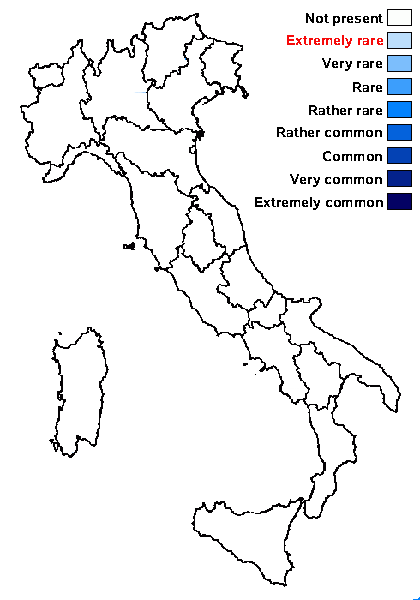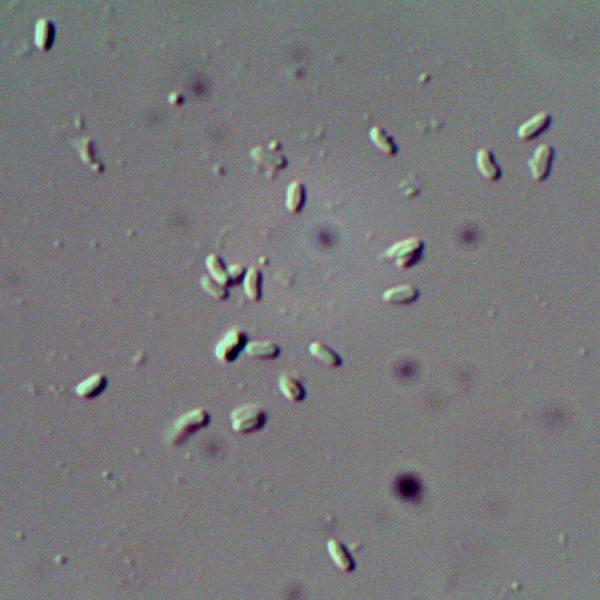Alyxoria viridipruinosa (Coppins & Yahr) Ertz
in Diederich & al., Bull. Soc. Nat. luxemb., 113: 105, 2012. Basionym: Opegrapha viridipruinosa Coppins & Yahr - in Lumbsch & al., Phytotaxa, 18: 90, 2011
Synonyms:
Distribution:
Description: Thallus crustose, thin, smooth or finely cracked, grey-green turning lemon yellow in the herbarium, sometimes poorly evident except near the apothecia. Apothecia lirelliform, black, 0.3-0.6(-1) x 0.1-0.3(-0.4) mm, mostly elongate, sometimes oblong, rarely branched, sessile, with a slit-like to finally expanded, often greenish-prunose disc. Proper exciple dark, carbonized, extending below the hymenium, K-, N+ red; epithecium brown, K- (when pruinose, the pruina reacts K+ bright yellow); hymenium colourless, 40-60 µm high, hemiamyloid; paraphysoids branched and anastomosing, 1-1.5 µm thick; subhymenium dark brown; hypothecium black, carbonized. Asci 8-spored, cylindrical-clavate, the inner layer of endoascus amyloid in upper part, with a I+ blue ring visible around a small ocular chamber, Varia-type. Ascospores (3-)4-5-septate, somewhat clavate, the central cell distinctly enlarged, hyaline but turning brown snd verruculose when overmature, (14-)15-19(-22) x (3.5-)4-5(-6) µm, the median cell slightly enlarged, with a c. 1 µm thick gelatinous perispore. Pycnidia semi-immersed, often faintly pale green-pruinose, 0.07-0.12 mm across. Conidia short-bacilliform, straight, 2.5-3 x 1-1.3 µm. Photobiont trentepohlioid. Spot tests: thallus K- or K+ yellow (visibile in sections under the microscope), KC-, C-, P-, UV-. Chemistry: an unknown greenish pigment in thallus, epithecium and pycnidia.Note: a species which is easily confused with A. varia, widespread on bark and lignum of hardwood trees in the British Isles (apparently most common on eastern Britain), and also known from the Netherlands. To be looked for in Italy, especially in the Tyrrhenian ecoregion.
Growth form: Crustose
Substrata: bark
Photobiont: Trentepohlia
Reproductive strategy: mainly sexual
Most common in areas with a humid-warm climate (e.g. most of Tyrrenian Italy)

Predictive model
Growth form: Crustose
Substrata: bark
Photobiont: Trentepohlia
Reproductive strategy: mainly sexual
Most common in areas with a humid-warm climate (e.g. most of Tyrrenian Italy)

Predictive model



